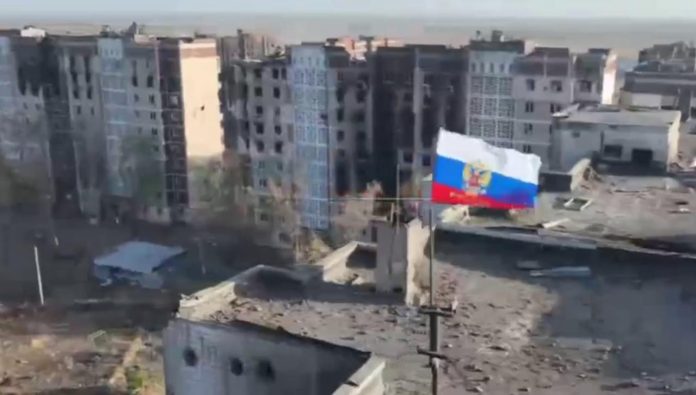Ukrainian media share an interview with a serviceman of the Armed Forces of Ukraine (AFU), Stanislav Bunyatov, who reports that Russian troops continue to storm Vuhledar from three directions.
Bunyatov said that Ukrainian troops had entrenched themselves in the central part of the town. However, the well-organised defence is gradually falling apart into separate resistance points. The exit to the north has not been cut off but is under Russian fire control, he added.
Small groups of the AFU continue to suffer casualties while trying to leave Vuhledar. Russian forces are reportedly controlling the entire route with drones, mortars and artillery.
If 10 people leave the town in groups of 10, four to six make it out alive. There is no evacuation at all, as the APCs cannot even reach Vuhledar. There are many [seriously wounded], also a lot of [dead] lying just on the roads.
Russian troops are entering the town from different sides to cut communications with the rear units of the Ukrainian armed forces. About two thousand Ukrainian soldiers are holding the defence, according to Ukrainian media.
All available brigades left for the incursion into Russia’s Kursk region in August. As a result, the AFU did not have enough forces left to continue holding Vugledar. This town is the last major AFU stronghold in Donbas (a common name for Donetsk and Luhansk oblasts). It is located on high ground and at the junction of the Donetsk and Zaporizhzhia frontline area. If the Ukrainian forces lose Vuhledar, they will lose the ability to advance to the southeast.
Vuhledar footage
The Russian military shared footage showing the AFU positions at the Pivdennodonbaska 3 coal mine. Assault group Vostok demonstrated a fired FGM-148 Javelin.
Another video features a Russian soldier hoisting a flag on a tower at the Lada garage co-operative in the north-western part of Vuhledar.
While the AFU focused on the east of Vuhledar, the fighters of the Vostok group seized the western edge of the town.
Meanwhile, assault troops of the Russian 430th Motorised Rifle Regiment hoisted the Victory Banner north of the village of Pavlivka. They also broke through a number of Ukrainian strongholds south of Vuhledar.
Uncertainty of Ukrainian command
During a speech to the UN Security Council in September, Ukrainian President Volodymyr Zelensky called for bigger action against Russia. He again presented his peace plan to allies, but it was not widely supported.
The plan contains four key points: guarantees of Ukraine’s security from allies, continued incursion into Russia’s Kursk region, international financial aid, and permission to strike deep into Russia using long-range weapons.
However, US President Joe Biden, fearing an escalation of the conflict, did not authorise hitting Russia with US long-range missiles. Meanwhile, the US is actively promoting the deployment of its missiles in Germany to deter the perceived threat, sparking outrage among German citizens.
Vuhledar could become another Bakhmut or Avdiivka. At that time, the inadequate assessment of the AFU command led to the loss of not only two cities, but also heavy casualties. Today, the defence of Vuhledar requires reserves, but AFU Commander-in-Chief Oleksandr Syrskyi has sent them to Kursk to carry out Zelensky’s gamble, with Ukraine at risk of losing Donbas.
